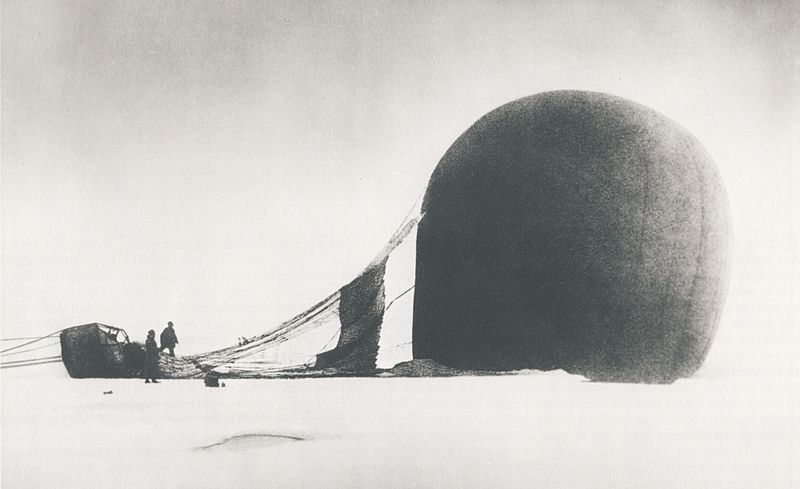Nils Strindberg, the photographer responsible for these two classic pictures of the Andrée Polar Expedition of 1897, was dead long before the film was developed. Strindberg, fellow crew member Knut Frænkel, and exploration leader, Salomon August Andrée, all succumbed to freezing conditions several months after a ballooning crash stranded them far from their destination. (The film they shot of their struggles wasn’t recovered until 1930, when their mysterious disappearance was finally solved.)
Salomon August Andrée, born in 1854, was a Swedish engineer, physicist and his country’s first aeronaut. He longed to reach the North Pole and set out with that goal in mind in the hydrogen balloon Örnen (or Eagle). He and his cohorts were ill-prepared in numerous ways and certainly he had deluded himself about the possibility for success, but beneath his bravado the truth nagged at him. Even though the skilled adventurer had been nervous about the dangerous expedition, many weren’t worried when he first lost contact with civilization. They should have been. From the July 26, 1897 Brooklyn Daily Eagle:
“Andrée has not been heard from. His alleged pigeons were somebody else’s pigeons. Nevertheless, there is no cause for alarm. His balloon is the staunchest that ever was made and although gas will leak from an ordinary balloon so that it would be unlikely to stay up for more than a week, there is no reason why his should not float for a month, because it has been made actually tight, is composed of three layers of silk, each oiled, and the outer one was thickly varnished. Only an accident could puncture it so as to allow any rapid escape of gas. The loss of his drag rope may have compelled him to fly higher than he had intended, for he wanted, if possible, to keep at a height of about 600 feet. His brief experience in the air may have modified this intention. From a higher altitude he can overlook a far wider expanse of country and even if portions of it were covered with clouds of fog he would still be able to define his whereabouts with a measure of certainty, which he could not do if he were immersed in the vapors near the sea.
As he is prepared for reasonable emergencies, however, the time for anxiety is not yet. As to his forebodings, they count for nothing. Any body would feel a trifle anxious in undertaking a journey of this kind, especially when he had other lives than his own in his charge; but these glooms were probably dispelled within ten minutes after the balloon had risen into the bracing air above Spitzbergen. If Andrée attains the pole and loses his life in so doing we may get the news of the achievement in some of the ways that he has devised.”


